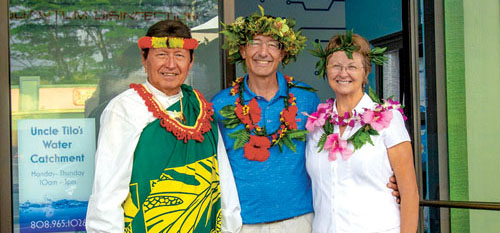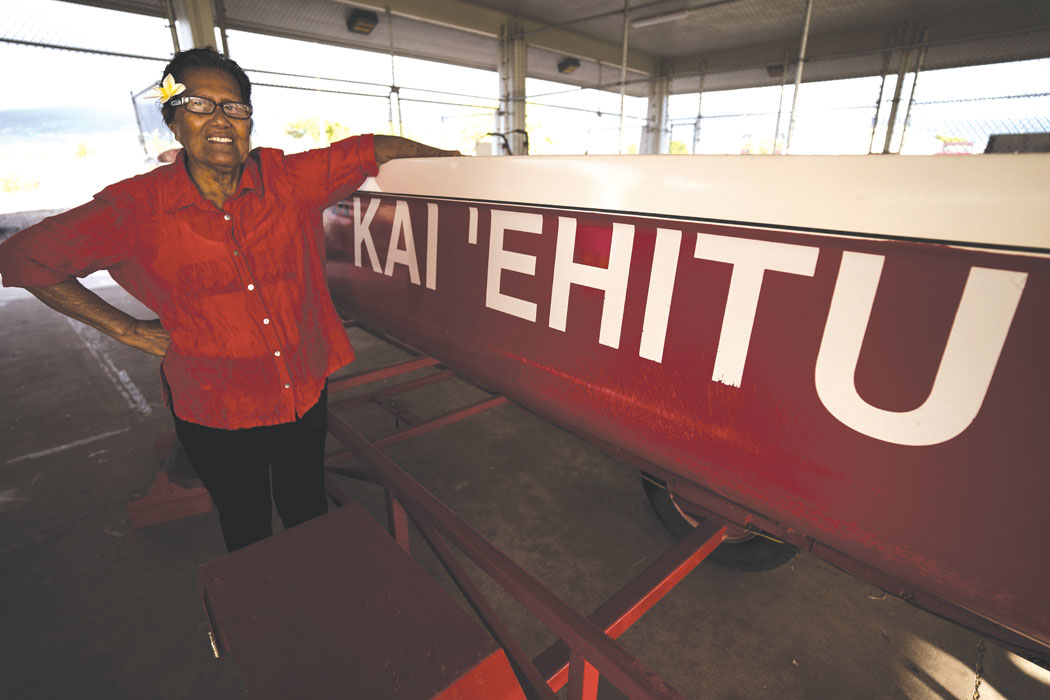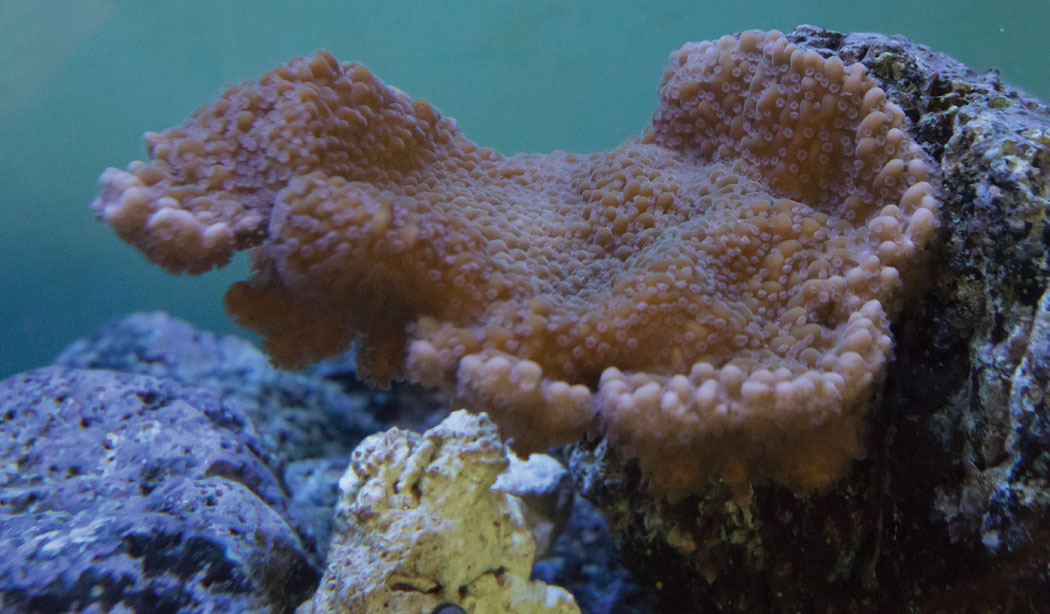
Mālama Mokupuni—Caring for Our Island Environment: Nursing Along a Coral Nursery

By Rachel Laderman
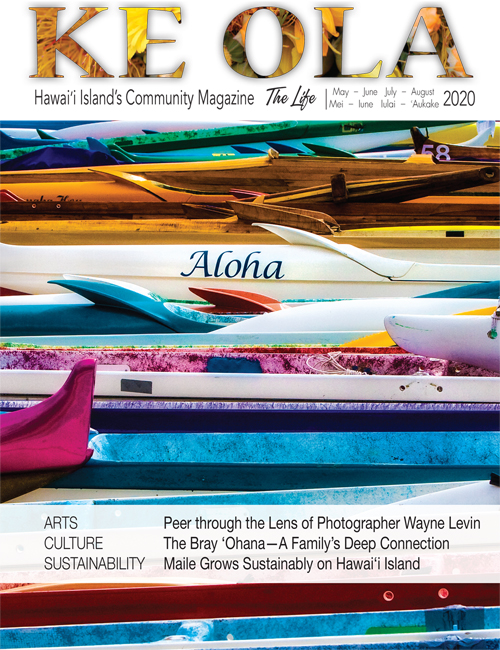
How do you create an ocean in an aquarium? This is the challenge Michelle Nason took on in 2017, when she was a student in the University of Hawai‘i at Hilo’s Marine Science Department and Marine Option Program (MOP), within the College of Natural and Health Sciences. She wanted to be able to preserve and regrow damaged corals broken off from their home substrate.
Corals, which form the reefs that protect our shorelines, certainly look like tough creatures—many people mistake them for rocks. Although supported by a rock-like skeleton of their own making, corals are colonies of thousands of living polyps, which are quite sensitive to ocean conditions. Coral populations around Hawai‘i Island suffered serious declines from the unprecedented coral bleaching of 2015. With continued warming oceans and stresses such as sediment and wastewater runoff, they have not recovered. As the corals die off, the hundreds of fish and invertebrates dependent on the reef habitat diminish as well.
Coral can also be damaged by anchors that drag through the reef and by severe storms. Coral are very specific to their location—if a broken fragment lands somewhere rocky and at the right depth, it can regrow. If it lands in sand, the polyps get smothered and die.
Hands-on Training
In 2017, Michelle and UHH MOP staff coordinator Matt Connelly began setting up a coral nursery to provide students an opportunity to learn how to grow coral in captivity. The UHH MOP Coral Nursery is housed in Keaukaha, at the Pacific Aquaculture and Coastal Resources Center (part of the UH College of Agriculture, Forestry, and Natural Resource Management). In addition to mentoring students, the nursery aims to provide local coral specimens for restoration and research.
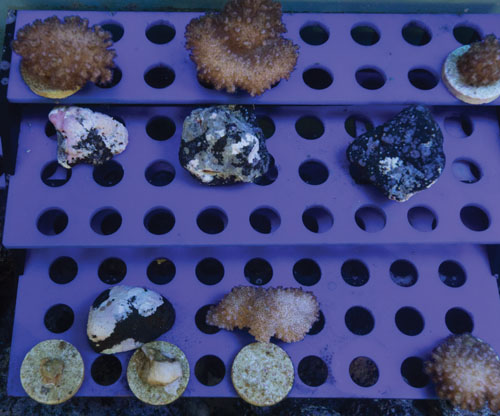
“Students learn how to raise and propagate coral in the delicately balanced conditions of a tank. These skills are very valuable for careers continuing this work in Hawai‘i and elsewhere,” says Matt. More than 50 students have participated, with 15 who volunteer regularly.
“Students learn the whole system: the reasons why there is a chiller on the tank, how the plumbing works,” says Michelle, now the lead aquarium technician.
Before the project could begin, the team needed to apply for a collection permit. It is illegal to collect coral and “live rock,” which is rock covered in coralline algae and other species. “When taking coral off the reef or beach, even if it is dead, you are depleting an ocean resource. Coral releases calcium into the ocean, provides hidey holes for animals, and is a base for other coral,” Michelle explains.
The first coral nursery tank was up and running in March 2019. This 125-gallon tank also has 25 gallons behind it in a sump, necessary to maintain the large volume of water constantly recirculating, adding oxygen, and filtering out excess nutrients. “Our plan is to replicate the ocean,” says Michelle. “The tank is pretty representative of coral growing in shallow water in the Hilo area,” says Matt. In addition to nurturing coral fragments, the tank houses a “clean-up crew” of 15–20 hermit crabs and around 50 nerite snails (pipipi in Hawaiian) to eat algae.
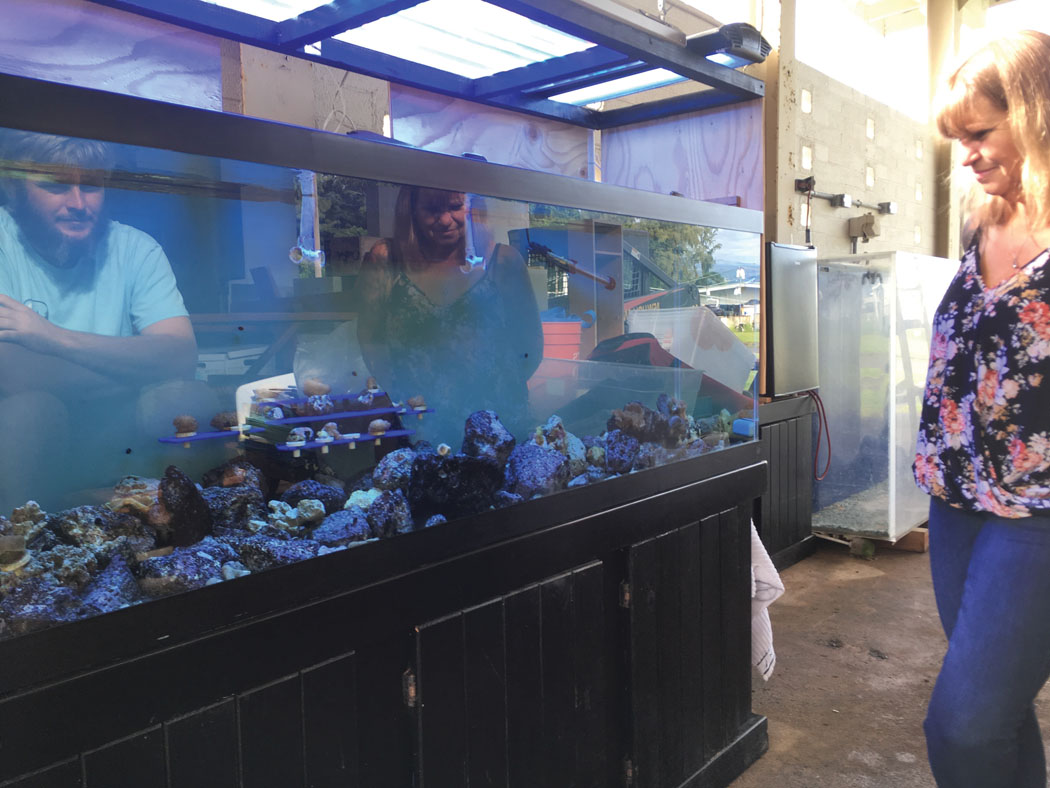
Challenges of Growing Wild Coral
While preparing to create a much bigger tank, Michelle, Matt, and students are learning the exacting needs of growing coral in an artificial setting. Most coral grown by hobbyists or aquaria have been bred in tanks over many years and are like house pets—not equipped to survive outside. Wild coral rescued from a damaged reef doesn’t last in a typical tank. It is complex to duplicate reef conditions. “You need proper lighting, temperature, feeding, waterflow; it’s a huge learning curve for each type of coral in each specific location,” says Michelle.
Despite its small size, the project has an excellent track record to date of maintaining live coral fragments.
Matt notes that their small nursery is poised between Hilo’s wastewater treatment plant and fuel storage tanks, symbolizing two of the greatest threats to coral. The team has a big challenge ahead, but is taking it one coral fragment at a time.
How You Can Help
- Do not take “live rock” and coral from reef or beach—it is illegal.
- Donate to the UH Foundation’s UH Hilo Marine Option Program Fund. Most funding for the coral nursery is from grants and donations: uhhmop.hawaii.edu/donate
References: uhhmop.hawaii.edu/certificate, uhhmop.hawaii.edu/coral
Rachel Laderman, Sustainable Pacific Program Lynker LLC/NOAA Affiliate, Hawai‘i Island

